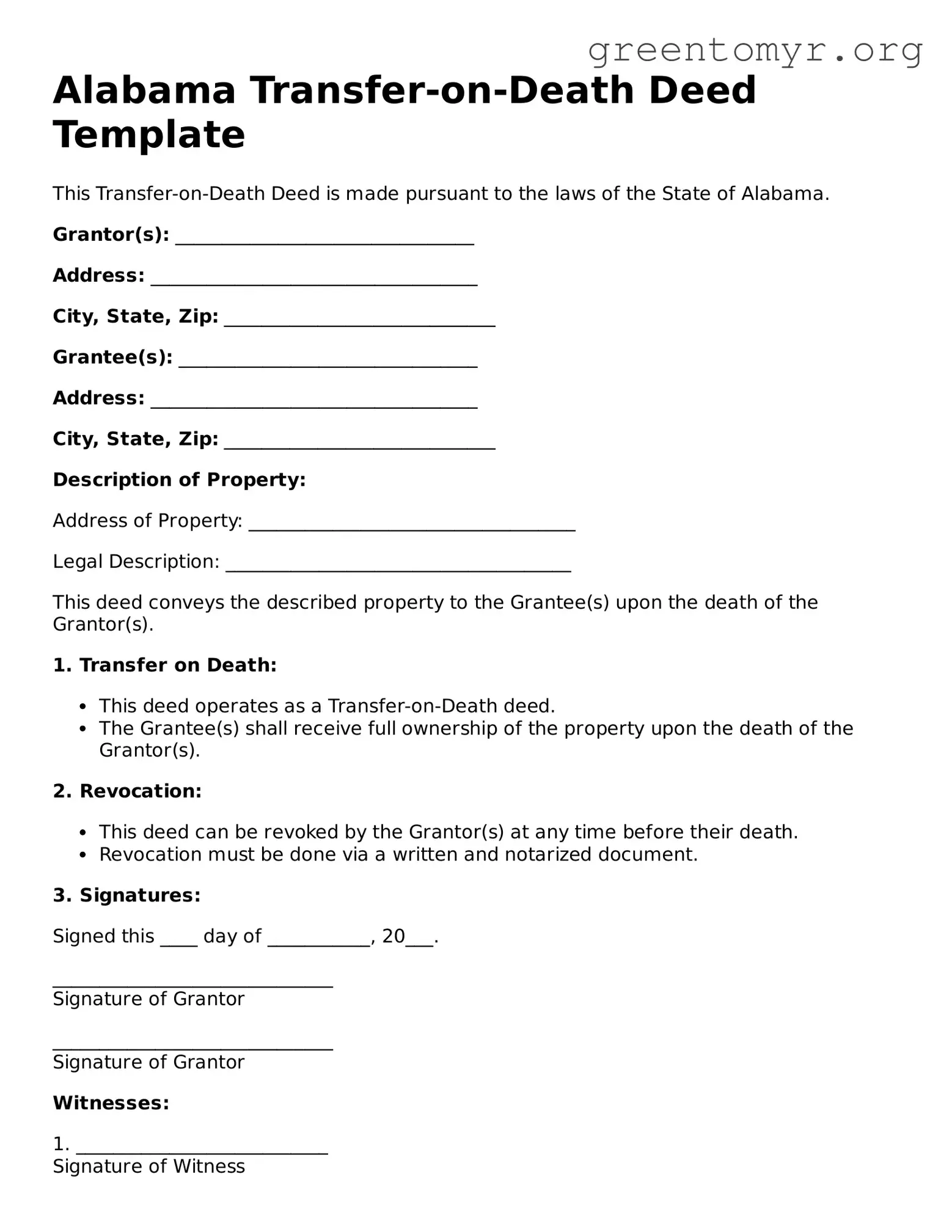Alabama Transfer-on-Death Deed Template
This Transfer-on-Death Deed is made pursuant to the laws of the State of Alabama.
Grantor(s): ________________________________
Address: ___________________________________
City, State, Zip: _____________________________
Grantee(s): ________________________________
Address: ___________________________________
City, State, Zip: _____________________________
Description of Property:
Address of Property: ___________________________________
Legal Description: _____________________________________
This deed conveys the described property to the Grantee(s) upon the death of the Grantor(s).
1. Transfer on Death:
- This deed operates as a Transfer-on-Death deed.
- The Grantee(s) shall receive full ownership of the property upon the death of the Grantor(s).
2. Revocation:
- This deed can be revoked by the Grantor(s) at any time before their death.
- Revocation must be done via a written and notarized document.
3. Signatures:
Signed this ____ day of ___________, 20___.
______________________________
Signature of Grantor
______________________________
Signature of Grantor
Witnesses:
1. ___________________________
Signature of Witness
2. ___________________________
Signature of Witness
Notary Public:
State of Alabama
County of ____________________
Subscribed and sworn before me this ____ day of ___________, 20___.
______________________________
Notary Public
My Commission Expires: _______________
